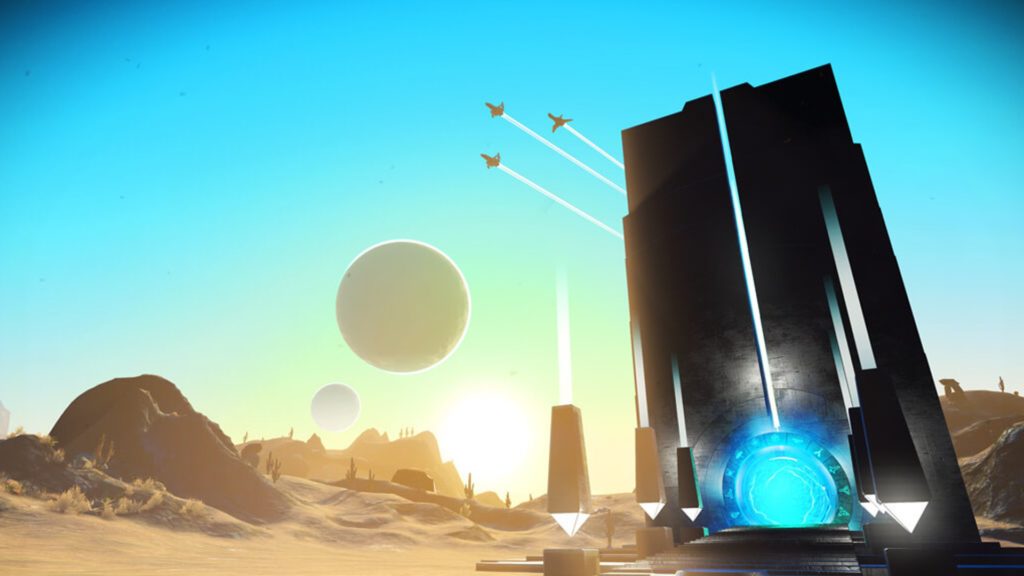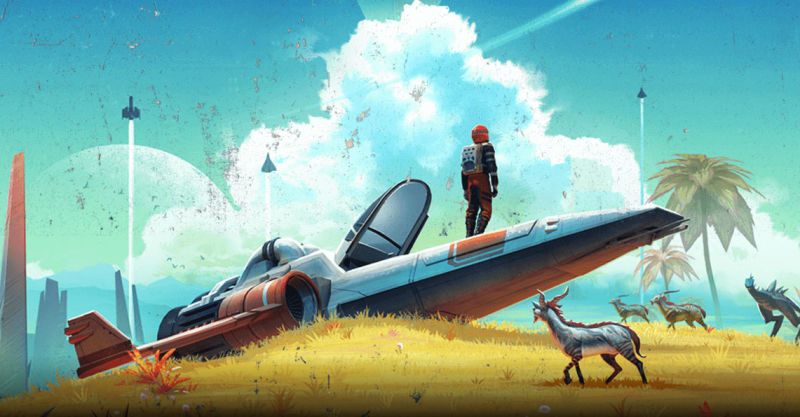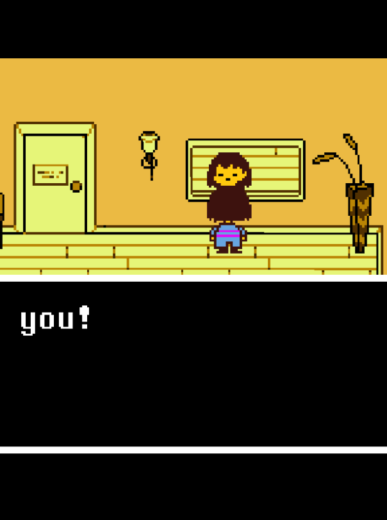When I stopped playing No Man’s Sky a year ago, I did so with bitterness. While many players complained about the lack of multiplayer and the overwhelming shortage of things to do in the game, I was largely content with mining Gold and Emeril to get rich and to buy the best-looking ship in the galaxy before making my way to the galactic core or exploring the path of the Atlas. Unfortunately, I never completed that journey, and it came to a quick end when I learned that there was no great mystery to be uncovered.
Aside from some cryptic but meaningless spiel from the giant Atlas rocks, there was very little mystery in the game to be truly engaged in. No Man’s Sky’s ‘endings’ felt unearned and unjustified.
Over the course of the year, Hello Games has been rolling out consistent updates and patches to No Man’s Sky, improving technical aspects of the gameplay experience and adding even more features so that there’d be more stuff to do in this seemingly infinite galaxy with 18 quintillion planets. And just last week, patch 1.3 was released. Titled “Atlas Rises,” the patch introduces limited multiplayer functionality, improved graphics and textures, as well as a 30-hour campaign.
Admittedly, the multiplayer aspect never really grabbed my attention. For me, the hook of No Man’s Sky was the sense of discovery and the idea of finding out the great truth of this vast, mythical universe.
Upon starting a fresh new game in No Man’s Sky, I went through the same motions I did a year ago. Repair the multi-tool, gather Heridium, Plutonium, and other essential resources, fix the launch thrusters, fix the pulse engine. Mechanically, everything I did here was exactly the same. Except this time around, the game gives you more structure and focus. Players are now given objectives that they can pursue in their own time, and these little ‘missions’ are geared towards getting you used to the core gameplay loop and how you can get from one system to another. This isn’t the highlight of Atlas Rises, though.
As I continued on my journey, completing the objectives that the game set for me, I also started receiving strange transmissions from an alien named Artemis. The transmissions are warbled, and the player is treated to cryptic dialogue that hints towards their identity. Soon, we find out that the player is known as a Traveler, a being that seeks to discover new things in the universe. There are also hints about malicious alien races, and the real purpose behind being a Traveler.
The mystery continues to deepen as you go on your journey to either the galactic core or Atlas, and for once, I finally felt like No Man’s Sky had succeeded in giving the player purpose. You could argue that No Man’s Sky is primarily a sandbox game, and the only story you get is what you make for yourself. But this wasn’t true at launch. Aside from mindlessly mining for resources to upgrade your ship, there was literally nothing to do other than making your way towards Atlas or the core. And it sure was a good kick in the face when you finally reached the end point and realized that there was nothing meaningful waiting for you at your destination.

I should mention that the ending of Atlas Rises isn’t really all that different from the base game. However, this time, the game actually gives you a more substantial journey to embark on. One that you can get invested in. The story and narrative beats are slight, but they’re just enticing enough to keep you going. There’s a certain charm to be appreciated from the game’s second-person writing, and the little chunks of lore you can glean from the new dialogue are also just enough to keep you immersed in this massive sci-fi universe. There is some closure to be had upon reaching your destination, and I’m content with that. That’s what Hello Games promised back before the game launched, and they’ve finally delivered.
Outside of the 30-hour campaign, No Man’s Sky also finally feels like a complete game with side activities to engage in. There are so many quality of life improvements and features, including being able to see important resources available on a planet after scanning it. The ominous portals that did absolutely nothing at launch finally have a purpose now. Players can warp to different planets, gather in a social hub area, and actually interact with each other to a limited extent. The multiplayer aspect isn’t complete, but it is a foundation for things to come.
And if you’re more into the money-making business like I am, you can build home bases and mining colonies. You can build farms and sell your luxury resources for vast amounts of units. The wildlife is more varied now, and I was genuinely surprised to see large flying animals in the sky when I landed on a parched planet. Though the game doesn’t seem to feature any sort of food chain or ecosystem where the wildlife is concerned, it’s still nice to see that there’s more variety in the kinds of animals you can encounter, and they’re no longer just different colored, copy-pasted versions of each other.
No Man’s Sky still isn’t quite the game that it was advertised to be back before launch, but it’s getting close. Patch 1.3 was a huge step towards achieving that goal if the recent Steam user reviews are anything to go by. One year later, and my initial bitterness with No Man’s Sky’s ‘ending’ is finally dissipating, giving way to a newfound sense of curiosity and excitement to see what other crazy wildlife I can find, and what other ways or methods I can come up with to make money. I’m not sure if players will ever truly forget the game’s disastrous launch window, but if Hello Games can continue to support the title with meaningful updates and additions, soon it won’t even matter at all.


There are no comments.